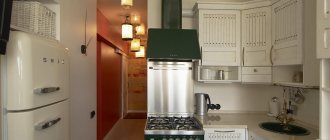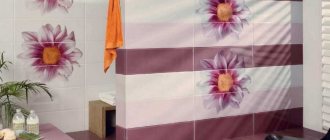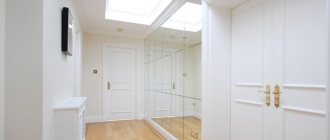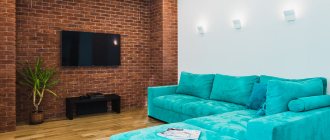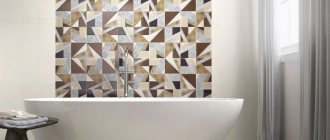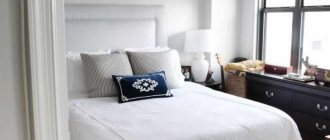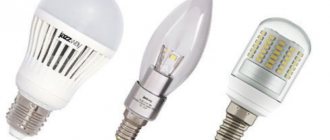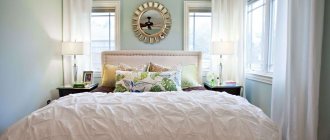Lighting has a strong influence on the perception of the interior. In many ways, the feeling of coziness and comfort for people in the room depends on the lighting fixtures. Correctly placed lamps transform the interior, demonstrating new facets and rich colors. With their help, you can create a romantic and cozy twilight, highlight functional areas and accents, and illuminate the front hall with bright, festive light.
One of the most popular tools for creating the right atmosphere in a room are wall sconces. With their help, they illuminate individual areas in the rooms and create comfortable corners for relaxation and quiet activities. Wall lamps complement the chosen interior style and play the role of magnificent, sophisticated decor. To get the best possible effect, the products must be installed correctly. Compliance with installation technology and the choice of points at which the devices will be installed are also important. We'll talk about how to hang sconces correctly in this article.
Basic safety requirements when installing sconces
Modern sconces are classified according to the method of connection to the electrical network into two main types:
- direct connection to electrical wiring;
- through the outlet and plug on the cord connected to the device.
In the first case, all the wires are “hidden” in the wall or body of the device, which makes operation safer. This option is ideal for a nursery or bathroom, when the presence of hanging wires and open sockets is not welcome. Also, such models have an aesthetic appearance and fit amazingly into the surrounding interior.
Products with a fork are more versatile. To install them, you do not need to leave wiring outlets or drill into the wall in advance; you can connect them anywhere near which there is an outlet. It is easy to move such sconces to another room or to another place when rearranging the furniture in the room. But there is a significant drawback - the stretching cord causes inconvenience and spoils the appearance of the wall. If there are small children or pets in the house, exposed live wires pose a source of danger.
The location and height of installation of electrical appliances are selected individually, based on the specific situation. A variety of factors are taken into account:
- the height of the ceilings and furniture next to which the lamps are installed. These could be dining tables, sofas or beds;
- interior style and wall decoration. So, quite often sconces are included in artistic compositions - drawings, paintings, hung next to mirrors and paintings;
- configuration and layout of the room, for example, the presence of arches, false columns, stairs;
- purpose of the room and arrangement of furniture.
But there are rules based on the sanitary requirements of SanPiN, SP, PUE, and safety precautions that should be followed in any case.
- Key switches for lamps in common rooms and bedrooms for adults are placed at a height of 80-170 cm. For children's rooms where small children live, this standard is 180 cm. This height allows you to protect the baby from contact with wires and electric current.
- It is recommended to install hidden wiring in bathrooms and toilets, which reduces the risk of short circuits due to increased air humidity and water droplets.
- In the kitchen, switches and the lamps themselves are located at a distance of more than 50 cm from the gas pipe, gas stove and flexible hose.
There are also illumination standards, expressed in Lux (1 lumen multiplied by 1 m2 of area) that you need to know about:
- places for work, reading, handicrafts – 300;
- children's – 200;
- bedrooms, living rooms, kitchens – 150;
- corridors, hallways, bathrooms – 50.
When making calculations, it is worth considering that the height of the sconce above the floor affects the area of the illuminated area and the scattering of light rays. The higher the device is mounted, the larger the illuminated area, and the dimmer the light itself.
Types of wall lamps
As you know, the term sconce usually refers to wall lamps that are small in size. The range of such products in stores is very wide, and it is difficult to imagine that it would be impossible to choose an option suitable for a particular interior.
Sconces are divided according to several criteria - design, shape, material, style, and, of course, external design.
Design features of sconces
By design, sconces can be stationary or adjustable. Each option is convenient for a specific application.
Stationary models
Stationary sconces - the direction of the light flux is always stable.
Stationary models always have a lampshade rigidly fixed in a certain position and therefore direct the light flux exclusively in one direction, which cannot be changed. This type of sconce is less functional and is more often used to illuminate corridors and hallways. It is quite suitable, with some exceptions, for living rooms. Such models, as a rule, are more elegantly designed than adjustable ones, so they can be used as a decorative element of the interior if they are correctly selected to match its overall style.
In turn, stationary models are divided into the following options:
- horns, which may have one or more horns, that is, sockets and shades for lamps;
- flat, protruding from the wall no more than 40-50 mm. They are well suited for installation in narrow corridors and stairwells.
Adjustable sconces
In this model of sconce, the direction of the light flux can be changed in a way that is convenient for the owners at the moment.
Adjustable sconces are equipped with a flexible leg or a leg consisting of several articulated parts, on which a socket with a lampshade is fixed. Thanks to the ability of the legs to accept and stably hold different positions, the light flux can be directed to different areas of the illuminated area.
Adjustable options are more functional and convenient to use, but, let’s face it, this is often achieved at the cost of reducing decorative qualities. However, assessing external performance is a very subjective matter, and many people, on the contrary, really like the apparent simplicity. Such lamps, by the way, are simply perfect for modern minimalist styles.
Sconces in which the direction can be adjusted come only with horns and, as a rule, they do not have more than three horns. Such lamps are good for installation both above the desk and above the head of the bed, since, if necessary, you can direct the light to a specific area, for example, on a book. At the same time, the light will not disturb the sleeping person nearby or, for example, in the living room, other family members who are busy watching TV.
Shapes and styles of lighting fixtures
Wall lamps can be given different shapes, and the choice according to this criterion is linked to the sconce’s compliance with a certain interior style. There are a huge number of lamp configurations, and it is impossible to consider them all. Therefore, only a few of the most popular options today will be presented below.
- Lamps with rectilinear geometric shapes (square, triangle, rectangle, etc.) are ideal for modern styles, especially for minimalism.
Original rectangular sconce with diffused light.
Such lamp models will fit into the interior of any room decorated in the appropriate style. Diffused light promotes rest and relaxation, so the sconce is perfect for installing above the bed in the bedroom or for creating a romantic atmosphere in the living room.
Semicircular sconce
Sconce prices
sconce
- Sconce models with rounded shapes are quite popular. They are compact, do not protrude too much from the wall, so they are convenient for installation even in a narrow corridor. Such lamps would also be appropriate as night lights, however, they are not particularly comfortable for night reading, since they provide too soft diffused light, or insufficient for normal “communication with a book,” or, if a brighter lamp is installed, it disturbs another person.
Horn stationary sconces can be equipped with shades or lampshades of various shapes.
- The most popular ones still remain stationary and adjustable horn sconces, since their range can be called the widest and most diverse. Stationary lamps are produced both in classic styles and in modern interior fashion trends. Adjustable, as mentioned above, are most often made in “loft” and “high-tech” styles.
Sconce made in the form of a branch with flowers.
- Not as popular as the above-mentioned models, but very beautiful and original are sconces made in the form of flowers and branches, as well as other stylized “natural” elements. Such lamps are usually used for living rooms or bedrooms, but they often serve as decorative lighting. They are not suitable for night reading if you use low-power lamps in them, and will interfere with rest if you install bright light sources.
Sconces designed in this way are perfect for the “romanticism” interior style.
A sconce designed as a lantern will fit perfectly into the interior of the hallway
- For hallways, as well as for installation above the front door on the outside, sconce models made in the form of lanterns of various shapes and styles are suitable. Some of these types of options can also be used for living rooms or bedrooms.
Children's version of sconce.
- A large number of sconces are produced for children's rooms, designed for different ages and genders of the child. Lamps can be given various shapes, which are decorated with plant elements, figures or images of cartoon or fairy-tale characters.
For young children, it is necessary to install safe lamps that, even if they fail, will not cause harm. In addition, if a lamp is chosen for a child under 3–4 years old, then it is worth purchasing a product that will not frighten him with its appearance or too bright light.
Types of switches for sconces
Wall lights can accommodate different types of switches. To choose the most convenient for yourself, it is worth considering all possible options:
Chain switch for sconces.
- A chain or cord is a fairly convenient switch option. Its operating principle is simple: the lamp turns on and off when performing similar actions - just pull the chain to turn the light on or off. At the same time, the chain often adds decorativeness to the lamp; it can be made in “gold” or “silver”, which allows you to choose the appropriate option.
If you wish and have some skill, you can install such a switch in a wall lamp yourself. It is not in short supply, and its cost among different manufacturers and sellers varies from only 100 to 200 rubles.
Push-button switch for sconces.
- A push-button switch can be installed on the sconce body if its shape, size and style allow. However, most often the button is located on a piece of wire and hangs down at the bottom of the lamp. This version of the switch is as convenient as the chain, but its “appearance” is not suitable for every design of the lighting fixture.
Key switch.
- The key switch is convenient and reliable in operation, and also has an affordable price. However, the power cord on which it is located is plugged directly into the outlet, which means that it will be visible. This feature immediately reduces the aesthetics of the room’s design. Therefore, if you choose the keyboard option, it is recommended to at least hide the power cable as much as possible in a special box (decorative cable channel).
Soft touch switch.
- An exceptionally comfortable option for controlling the lamp is a touch switch equipped with a soft touch sensor. To turn the light on and off using it, you don’t have to click a button or pull a chain—just touch the sensor with your finger.
This element is a miniature panel measuring 15÷20 mm, so it can easily be installed on any suitable surface. The sensor will practically not stand out, as it has a neutral aluminum color. The sensor is connected to the operation regulator using a thin wire that can be hidden in the sconce leg. The main equipment can be hidden behind the head of the bed, and the socket for connecting it is fixed to the baseboard or at the bottom of the wall.
How to connect a sconce with a cord switch
Installation of any of the above switches is carried out according to the same principle and diagram. All of them are placed in the gap of the phase wire.
We can add that some sconces may not have their own “personal” switch at all. This often happens when wall lights are included in the overall lighting scheme of the room and are controlled by permanently installed switches.
Materials for making lamps
Expert opinion: Afanasyev E.V.
Chief editor of the Stroyday.ru project. Engineer.
It is very important to choose the right sconce based on the material of manufacture, since not only its aesthetics will depend on this factor, but also its resistance to elevated temperatures, and, accordingly, the durability of the product. So, if you plan to use conventional incandescent lamps for lighting, you must choose a lamp made of material that can withstand high heat.
So, it is necessary to name the commonly used materials for making sconces:
Bronze sconce, made in antique style.
- Metal . Expensive models use bronze, brass, aluminum, regular and stainless steel. Simpler products often use silumin, which is not distinguished by strength and durability - the alloy is very fragile. Paint and varnish coatings of different shades are applied over individual parts of the lamps. Some of the coatings imitate gilding, silver or aged bronze.
Wooden model of sconce.
- Tree . Wooden sconce options are well suited for styles such as “country”, “Provence” and other interior design trends close to rustic ones. The biggest advantage of this material is its environmental friendliness and lightness of materials. In addition, wood differs from other analogues in its natural warmth and natural textured pattern.
Plastic adjustable LED wall light.
- Plastic . Both expensive and budget lamp models are made from this material. Much depends on the quality of the polymer, the design of the sconce and the use of a certain type of lamp in the device.
Budget models are often made from low-quality material, “ennobled” with various coatings that can imitate bronze, silver and gold. But such lamps, alas, do not last long, since the polymer quickly ages and becomes fragile.
Chandelier prices
chandelier
Higher quality options include sconces that have an adjustable design with LED lamps. Moreover, in these models the manufacturer does not seek to hide the manufacturing material under a masking coating.
The rattan lampshade goes well with the metal base.
- Lampshades and sconce shades are made of glass, plastic, rattan, fabric, leather, etc.
Glass goes well with a base made from any of the materials mentioned above. Plastic shades are best suited for a body made of the same material or metal painted in a certain color. Rattan lampshades go well with wood or metal. Fabric lampshades are used for wooden, metal and plastic bases.
Lamps for sconces
Today there are several types of lamps on sale that can be used for installation in wall lamps:
Incandescent lamps are gradually going into retirement, replaced by more durable and economical competitors
- The usual incandescent lamps are produced with bases of different sizes and can be used in sconces equipped with the appropriate socket. The main disadvantages of these light sources are their short service life, excessive energy consumption, and the fact that when the bulb burns out, they often tear off the base or even explode, and small and extremely sharp glass fragments fly in different directions.
In addition, the lamps become very hot during operation, so it is not recommended to install them in lamps with plastic shades and fabric lampshades. In any case, there is a certain limit on the power of such a lamp that can be installed in a particular device - precisely because of the high heat transfer.
Not so long ago, compact fluorescent lamps were perceived as a huge step forward. But their time seems to be passing.
- Fluorescent lamps consume less energy (for which they have earned the common popular name “energy-saving”) and work much longer than incandescent lamps, but they have their drawbacks. Firstly, they contain mercury, and secondly, lamps with them cannot be connected to a dimmer, and this quality is sometimes very important for sconces. In addition, many lamps develop flickering over time, which is irritating to the eyes.
- Halogen lamps are relatively economical, have good durability and excellent light output. They are durable and are not damaged if they burn out, but just like incandescent lamps, they get very hot. In addition, halogen lamps require special care during installation - do not tolerate touching the glass bulb with your bare hand. It must be said that this type of light source is practically not used in wall lamps or is extremely rare.
LED lamps are no longer so expensive, and it is best to opt for them.
- LED lamps are considered the safest, most economical and reliable in operation today. They work longer than any other type and produce a bright luminous flux. In addition, LED lamps are constantly being improved, their range is growing day by day, and the cost is correspondingly decreasing.
Sconce in the kitchen
In the kitchen, sconces are selected in the same style as other lighting fixtures and furniture. They can play the role of accents, or harmoniously complement the interior. Three options are considered the most successful places for installation:
- on the side of the dining table placed against the wall, at a level of 60-70 cm from the tabletop;
- above the worktop, between cabinets or shelves. Retreat from the surface at least 50 cm;
- on the wall next to the sofa or kitchen corner.
Switches are positioned so that they can be easily reached without getting up.
Sconce in the bedroom
This is a traditional room for installing sconces. As a rule, they are installed in pairs, on either side of the head of the bed, so that it is convenient to read before going to bed or get up at night without disturbing the spouse sleeping next to him. Height – 120-150 cm above the floor, depending on the height of the bed. In addition, lamps can be installed on the side of the dressing table, illuminating the mirror, or next to an armchair or sofa.
Sconce in the living room There are a lot of options for installing additional wall lighting in the living room:
- over the back of the sofa;
- just above the mantelpiece;
- on the sides of the TV;
- next to the armchairs and coffee table in the recreation area;
- above the table, if available.
Height – 1-2 meters, depending on personal preferences and interior.
Peculiarities
- Incandescent lamps are one of the very first inventions in the field of lighting. Various designs and shapes of this type of lamp are available, power is measured in watts. There are lamps from 20 to 100 W. In the bedroom, no more than 40W are used.
- Fluorescent lamps come in different shapes and designs. The disadvantages include the unregulated light flow from these lamps.
- Halogen light sources are often used as additional lighting.
- LED lamps are one of the latest inventions. They have a high level of environmental friendliness and efficiency. Ideal for sconces at the head of a children's bed.
The packaging of the lamps contains numbers that indicate not the degree of brightness of the combustion, but the power consumption of the network.
Sconce in the nursery
For babies, choose colorful, fantastic night lights, placing them above the crib. The child should not reach the lamp with his hands, but the switch is located in an area accessible to him. For teenage children there are no such restrictions, and the height is selected depending on the purpose of the device.
Sconce in the hallway and hallway
As a rule, the layout of these premises does not imply the presence of windows. The exception is private houses and dachas with an individual project. To illuminate a long corridor or a closed hallway space, ceiling lights alone are not enough. Rays of light directed from above distort colors and create sharp shadows; darkness lurks in the corners. At the same time, good light in the corridor and hallway is necessary to move freely, clean up before going outside or change into household clothes. And the best option for additional lighting is wall lamps. You just need to hang them correctly.
- In narrow, long corridors, light sources are mounted on the walls at a level of 170-200 cm, so as not to accidentally get caught when moving. The number of products is calculated by length, spaced approximately 1.5-2 meters.
- If the room has a regular square or semicircular shape, or the corridor is wide enough, lamps for local lighting are installed at a height of 150 cm. However, it is worth considering that the light of low-power bulbs will not reach the opposite wall.
In the case when sconces are installed above cabinets, consoles, or built into furniture sets, the height can be arbitrary. Also, when installing lighting next to a mirror or decorative element, they are guided, first of all, by its location.
Stretch ceilings for the bedroom. Photos of interiors. Selection of colors
An important point when arranging a stretch ceiling in a bedroom is a thoughtful approach to choosing its color.
Favorable and unfavorable colors
In order to choose the right design solution for the bedroom, in addition to looking at photos, it is advisable to know the effect of colors on a person’s mood. First of all, colors and shades are warm and cold. Typically, “hot” colors (red and orange) are avoided in the bedroom. Cool tones (blue and purple) are also rare. Typically, the design is done in tones of medium warmth (yellow, green, blue).
Hanging chandelier located in the center of the stretch ceiling
Here is a list of unfavorable colors for the bedroom:
- red – excites;
- purple (and even more so black) - conceals space;
- blue – cold;
- brown and gray - depress the nervous system.
The suspended ceiling contains recessed spotlights
Pay attention to the photo of the design of suspended ceilings in the bedroom. Favorable colors predominate on them:
- pink – creates a romantic atmosphere;
- yellow – adds a feeling of warmth and comfort, good for a bedroom with windows facing north;
- shades from yellow to green – a calming range, relieve fatigue;
- shades from yellow to beige - enhance the feeling of comfort;
- turquoise – “refreshes”, invigorates;
- light blue – calms, lulls;
- dark blue – “cools” the interior, suitable for bedrooms with windows facing south;
- white – classic, interesting for bedrooms in retro style;
- black and gray in the form of splashes - gives rigor and style, not bad if the bedroom additionally serves as an office.
Point lighting sources in a glossy stretch ceiling
A color scheme
If you use photo printing to apply a photo to a canvas, then you should pay attention to how the colors in this photo are combined. Below is a list of favorable color combinations for the bedroom:
- beige – pink;
- yellow - orange (splashes of orange add morning vigor);
- green – sea green;
- blue – blue, violet.
Glossy stretch ceiling reflects space and visually enlarges the room
Also, in some photos of suspended ceilings with photo printing for the bedroom, you can trace the antipodean colors. Even those who love contrasting designs are advised to avoid these combinations in the bedroom, especially in the nursery:
- Red Green;
- orange – blue-green;
- yellow – violet;
- pink – herbal.
Fabric stretch ceiling with stars in a children's room


